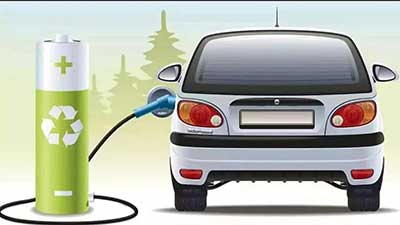Relevance: GS-3: Issues relating to development and management of Social Sector/Services relating to Health, Education, Human Resources.
Key Phrases: Niti Aayog, Battery swapping, swappable batteries, unique identification number, retail fuel stations, testing protocol, Internal Combustion Engine.
Why in News?
- Government think tank Niti Aayog recently released a draft battery swapping policy under which all metropolitan cities with a population above 40 lakh will be prioritised for development of battery swapping network under the first phase.
What is Battery Swapping?
- Battery swapping is a mechanism that involves exchanging discharged batteries for charged ones.
- This provides the flexibility to charge these batteries separately by de-linking charging and battery usage, and keeps the vehicle in operational mode with negligible downtime.
- Battery swapping is generally used for smaller vehicles such as two-wheelers and three-wheelers with smaller batteries that are easier to swap, compared to four-wheelers and e-buses, although solutions are emerging for these larger segments as well.

Key Proposals in Niti Aayog’s Draft Battery Swapping Policy
- Reduce the difference between tax rates on lithium ion batteries and electric vehicle supply equipment. Currently, batteries attract GST at 18%, while EV supply equipment attract GST at 5%.
- Offer the incentives that EVs with fixed batteries get to EVs with swappable batteries.
- Require state governments to ensure that public battery charging stations are eligible for power tariffs at concessional rates.
- Ease the registration process for EVs sold without batteries or those with swappable batteries.
- Assign a unique identification number to swappable batteries and battery charging stations.
- Vehicles with swappable batteries will be sold without a battery, providing the benefit of lower purchase costs to potential EV owners.
- Any individual or entity is free to set up a battery swapping station at any location, provided that the specified technical, safety and performance standards are adhered to.
- Set up battery swapping stations at locations like retail fuel stations, public parking areas, malls, etc.
What is the Battery-as-a-service Business Model?
- The battery-as-a-service business model is one in which companies set up dedicated battery swapping stations.
- These stations maintain stocks of replaceable batteries which are charged and kept in the stations.
- Customers who have compatible EVs can then come in and swap out their discharged batteries and have it replaced with the charged ones at these stations, for a subscription or a pay–as-you-go model.
- Battery swapping allows EV owners to quickly get a boost without worrying about having a charger installed, or wait for the vehicle to charge up.

Does the Draft Policy Talk About EV Safety?
- Rigorous Testing Protocol
- To ensure a high level of protection at the electrical interface, a rigorous testing protocol will be adopted, the draft said, to avoid any unwanted temperature rise at the electrical interface.
- Battery management system
- The battery management system, which is a software that controls battery functions, will have to be self-certified and open for testing to check its compatibility with various systems, and capability to meet safety requirements.
- This particularly assumes significance given the recent incidents of electric two-wheelers bursting into flames.
- Batteries shall be tested and certified
- Batteries shall be tested and certified as per AIS 156 (2020) and AIS 038 Rev 2 (2020) standards for safety of traction battery packs, as well as additional tests that may be prescribed for swappable batteries which are subject to multiple coupling/decoupling processes at the connectors.
- Equipped with Advance features
- Additionally, for better protection of assets, swappable batteries will have to be equipped with advanced features like IoT-based battery monitoring systems, remote monitoring and immobilisation capabilities.
Concerns of Prospective Electric Vehicle Buyers
- High Cost of EVs:
- Although the total cost of ownership for an electric 2- wheeler is getting comparable to an (Internal Combustion Engine) ICE counterpart, the acquisition price for EVs is still 30-50% higher, which is a significant deterrent in EV scale up.
- High Battery Replacement Cost:
- The battery replacement cost for high range E2W is expected to be up to INR 45000.Replacing the battery is a costly affair in this price-conscious 2W market.
- Long Charging Time of Batteries:
- Riders have often quoted a longer charging time of batteries instead of shorter fuel refilling time for ICE vehicles as one of the barriers to EV adoption.
Conclusion
- Battery swapping policy come amid several instances of EVs erupting into flames, hence safety should be given the top priority.
- The policy is targeted at supporting the adoption of battery-swapping, primarily for battery swapping systems used in electric scooters and three-wheeler electric rickshaws.
- With electric vehicles now gaining more popularity in India thanks to the launch of several new electric scooters being launched over the last year, the Indian government’s goal of electrifying the transport system by 2030 has received a major boost.
Sources: Indian Express
Mains Question
Q. What are the key proposals in Niti Aayog’s draft battery swapping policy.How it is going to help India achieve its goal of electrifying the transport system by 2030. (250 word).







